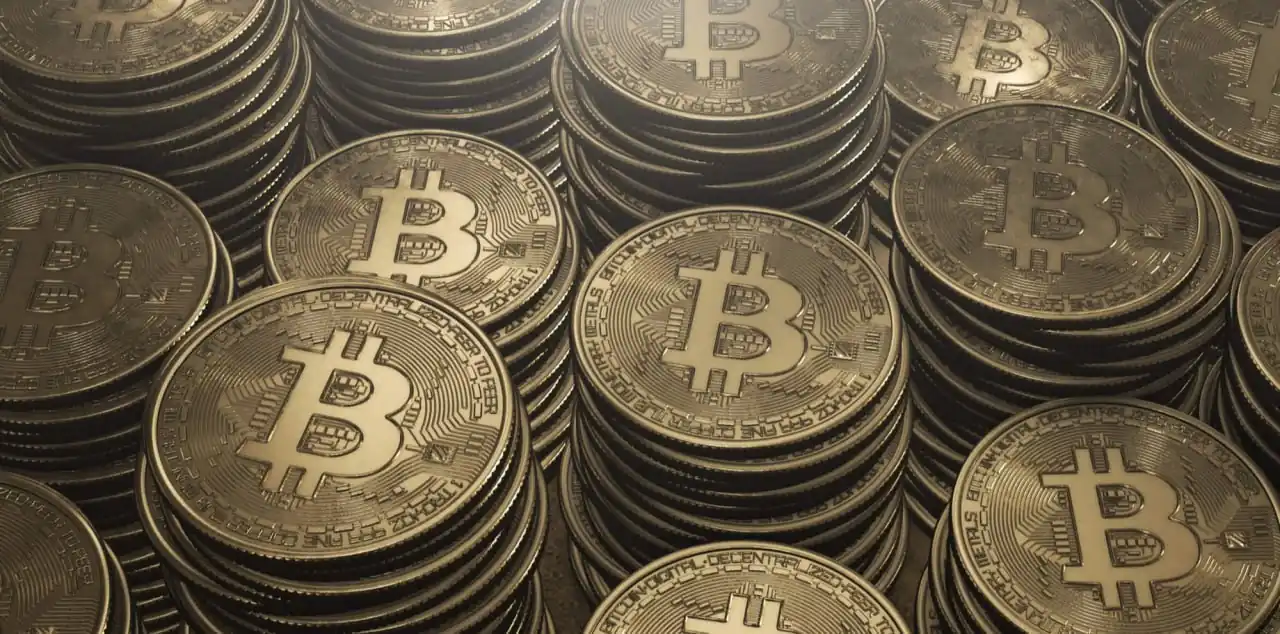Introduction to Bitcoin's Limited Supply
In the world of cryptocurrencies, Bitcoin stands out not only as the first decentralized digital currency but also for its unique limited supply. Unlike traditional fiat currencies that can be printed at will, Bitcoin operates on a predetermined scarcity model. Understanding the concept of Bitcoin's limited supply is essential for anyone interested in this digital asset. So, how much Bitcoin is left?
Bitcoin's scarcity is rooted in its design and the principles set forth by its mysterious creator, Satoshi Nakamoto. The maximum supply of Bitcoin is capped at 21 million coins. This predetermined limit ensures there will never be more than 21 million Bitcoins.
The Role of Halving Events
To maintain the scarcity of Bitcoin, the network has a built-in mechanism called "halving events." Approximately every four years, the rate at which new Bitcoins are created is cut in half. This process is known as a "halving" and is programmed into the Bitcoin protocol.
During a halving event, the reward given to Bitcoin miners for validating transactions and securing the network is reduced by 50%. This event occurs approximately every 210,000 blocks. The most recent halving occurred in May 2020, reducing the block reward from 12.5 to 6.25 Bitcoins.
The purpose of halving events is to control the rate at which new Bitcoins enter circulation, gradually slowing down the production over time. This design ensures that the supply of new Bitcoins diminishes over the years, making it increasingly harder and resource-intensive to mine new coins. So, how much Bitcoin is left?
Exploring Bitcoin Mining and Block Rewards
Bitcoin mining plays a crucial role in maintaining the network and validating transactions. Miners use powerful computers to solve complex mathematical problems, and in return, they are rewarded with newly minted Bitcoins. However, as the supply of new coins decreases over time, miners will rely more on transaction fees to sustain their operations.
As the reward for mining decreases, transaction fees become more important. This system encourages miners to prioritize transactions with higher fees, ensuring the network's security and incentivizing efficient use of the blockchain. So, how much Bitcoin is left?
It's worth noting that the process of mining Bitcoins becomes increasingly challenging and resource-intensive as time goes on. It is due to the design of the Bitcoin protocol, which adjusts the mining difficulty to ensure that new blocks are added to the blockchain approximately every 10 minutes.
By understanding the fundamental principles of Bitcoin's limited supply, halving events, and the role of mining, one can gain a deeper appreciation for the scarcity and value of this groundbreaking digital currency.
Total Supply and Circulating Bitcoin
To understand how much Bitcoin is left, we must examine the current total supply and amount already in circulation. As mentioned earlier, the maximum supply of Bitcoin is fixed at 21 million coins. However, not all of these coins are readily available in the market.
Today, the total supply of Bitcoin is approaching 18.8 million coins. Approximately 89% of the maximum supply has already been mined. The remaining 11% represents the Bitcoin yet to be produced. So, how much Bitcoin is left?
When we talk about the circulating Bitcoin supply, we refer to the coins actively traded and held by individuals and institutions. The exact number can fluctuate as coins are lost, destroyed, or kept in long-term storage. Currently, it is estimated that around 18 million Bitcoins are in circulation.
The Impact of Lost and Dormant Bitcoin
One factor affecting Bitcoin's availability is the phenomenon of lost or dormant coins. Bitcoins can only be recovered if the private keys that grant access are recovered or remembered. It can happen if individuals need to find their wallets or remember their passwords. It is estimated that many Bitcoins have been lost this way.
Some Bitcoin holders keep their coins dormant, storing them in secure offline wallets for long periods. These dormant Bitcoins are effectively removed from circulation, reducing the available supply.
While it is challenging to determine the exact number of lost or dormant Bitcoins, various studies and analyses suggest that a substantial portion of the total supply may be inaccessible. It further contributes to the scarcity and limited availability of Bitcoin. So, how much Bitcoin is left?
Predicting the Future Supply of Bitcoin
With the current rate of block rewards and halving events, we can make projections about the future supply of Bitcoin. The next halving is expected to occur in approximately four years, reducing the block reward to 3.125 Bitcoins per block.
So, how much Bitcoin is left? Based on these projections, it is estimated that the final Bitcoin will be mined around the year 2140. This gradual reduction in production rate ensures that the remaining Bitcoin supply becomes scarcer over time.
As the supply diminishes, the laws of supply and demand come into play, potentially driving the price of Bitcoin higher. The limited availability of Bitcoin, coupled with increasing demand, has been a significant factor in its value appreciation over the years.
We will explore the implications of Bitcoin's limited supply, particularly its role as a store of value and its impact on financial markets.
Bitcoin's Potential as a Store of Value

The limited supply of Bitcoin has significant implications for its potential as a store of value. Unlike fiat currencies subject to inflation and devaluation, Bitcoin's scarcity provides a hedge against such risks. With a maximum supply of 21 million coins, Bitcoin offers a finite resource that central authorities cannot manipulate.
As an increasing number of individuals and institutions recognize the benefits of Bitcoin as a store of value, the demand for this digital asset continues to grow. The scarcity of Bitcoin amplifies its value proposition, as it becomes a sought-after asset in a world where traditional currencies face economic uncertainties.
Bitcoin's Role in Financial Markets
Bitcoin's limited supply has also contributed to its emergence as a significant player in financial markets. As institutional investors and corporations enter the cryptocurrency space, the scarcity of Bitcoin becomes even more pronounced. Institutions seeking to diversify their portfolios are attracted to Bitcoin as a potential hedge against inflation and a store of value.
The limited supply of Bitcoin and its growing acceptance and integration into the traditional financial system have increased liquidity and trading volumes. Bitcoin's scarcity has been crucial in its rise as a legitimate and recognized asset class. So, how much Bitcoin is left?
The Effect on Bitcoin's Price
The scarcity of Bitcoin plays a fundamental role in determining its price. The basic principles of supply and demand dictate that when the supply is limited and the demand increases, the price rises. This relationship has been evident throughout Bitcoin's history, with significant price rallies occurring as demand outstrips supply.
The halving events, which reduce the rate at which new Bitcoins are created, act as catalysts for price increases. With each halving, the supply of new coins entering the market is cut in half, putting additional pressure on demand to sustain the upward price trajectory.
Bitcoin's limited supply also contributes to its volatility. The relatively small supply and high demand create an environment where even minor shifts in market sentiment can have significant price impacts. Investors must understand and consider these dynamics when engaging with Bitcoin and other cryptocurrencies. So, how much Bitcoin is left?
Using the data provided, we can calculate how much Bitcoin remains to be mined. Currently, 19,408,393.75 BTC are in circulation, while 1,591,606.3 BTC remains to be mined. It means that 92.421% of the total Bitcoins have already been issued.
On average, 900 new Bitcoins are mined daily, so the theoretical end of Bitcoin production is scheduled for 2140.
Safeguarding and Utilizing Bitcoin with Us
At PlasBit, we understand the importance of security and convenience when holding and using cryptocurrencies like Bitcoin. That's why we have developed innovative wallets and crypto debit cards that seamlessly empower individuals to integrate their digital assets into their everyday lives.
Crypto Debit Cards
Our Visa cards allow users to instantly convert their Bitcoin and other cryptocurrencies into fiat currencies. With our Visa card, you can spend your crypto at any merchant that accepts traditional debit or credit cards, both online and offline. It opens up a world of possibilities, enabling you to use your Bitcoin for everyday purchases, travel expenses, and more. What are the benefits?
Security
At PlasBit, we prioritize the safety of your funds. Our cards come with robust security features, including multi-layered encryption, two-factor authentication, and secure storage of your private keys. You can have peace of mind knowing that your crypto assets are protected.
Convenience
Our crypto debit cards allow you to access your funds anytime, anywhere. Our user-friendly mobile app will enable you to manage your account, track transactions, and easily convert between cryptocurrencies and fiat currencies. You'll have the flexibility to use your crypto in a way that suits your needs.
Our platform utilizes secure cold storage for most crypto holdings, ensuring they are kept offline and protected from potential cyber threats. We also employ advanced encryption algorithms to secure your transactions and personal data.
In conclusion, our wallets and crypto debit cards offer a secure and convenient way to hold and use Bitcoin and other cryptocurrencies. With our cards, you can embrace the potential of digital assets while enjoying the benefits of security, convenience, and privacy. Join us and embark on a journey toward a future of financial empowerment and freedom.
The Future of Bitcoin in the Crypto Revolution
We have explored how much Bitcoin is left, delving into its limited supply, halving events, and the implications for its value and significance in the financial world. Bitcoin's scarcity has positioned it as a store of value and a significant player in financial markets.
Furthermore, we have highlighted our innovative platform and crypto debit cards as a secure and convenient solution for holding and utilizing Bitcoin and other cryptocurrencies. At PlasBit, we offer the means to seamlessly integrate digital assets into everyday transactions, all while ensuring security, privacy, and ease of use.
As the world of cryptocurrencies evolves, Bitcoin's limited supply will remain a crucial factor in its value proposition. At PlasBit, we stand at the forefront of this revolution, providing individuals with the tools to navigate the crypto landscape confidently.
Embrace the potential of Bitcoin and be part of the transformative future of decentralized finance.







